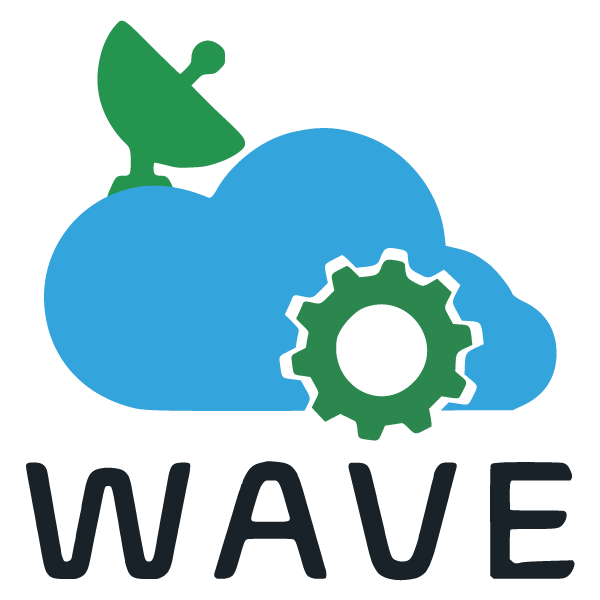How is WAVE Leading the Virtualization Revolution in Satcom?

Photo: Via Satellite archive
Many remember when mobile phone companies locked our devices to their networks with pre-installed applications. Each phone company would put users into their walled garden, locking them into device/company-specific ecosystems. Upgrading or switching devices/companies meant changing your phone number, losing information for personal contacts, and disrupting your personal life. This lock-in hindered flexibility, keeping users beholden to specific vendors or phone companies with little room for customization and blocking third-party devices and applications.
With the rise of device portability, third party devices, and app stores, users were freed from these constraints, granting consumers unprecedented freedom, and the mobile industry witnessed a surge of innovation, transforming into what we know today.
The satcom industry is now experiencing a similar revolution with waveform virtualization, championed by the WAVE Consortium, which enables satcom operators not only to break free from vendor lock-in but also provides a migration path for modem vendors to migrate their modem applications into private or public cloud platforms. By standardizing waveform virtualization, WAVE enables operators to deploy high-performance, scalable modem solutions with faster turnaround times. These innovations work seamlessly across common hardware platforms using commercial off-the-shelf accelerator cards and servers deployed in major cloud systems.
Major industry heavyweights, including SES, Intelsat, Amazon Web Services, Gilat, iDirect, and Comtech, who comprise most of the WAVE board of directors, commend this approach.

One of WAVE’s key milestones in its first year after it was announced in March of 2024 was the mention of WAVE in the Senate Armed Services Committee’s 2025 National Defense Authorization Act. This encourages the U.S. Department of Defense to incorporate WAVE standards for satcom in new acquisitions to enhance flexibility, responsiveness, and real-time system modifications. This recognition highlights WAVE’s critical role in advancing virtualized architectures for commercial operators and military applications.
As the DoD works to deliver reliable and resilient communications for warfighters, adopting WAVE standards will boost operational agility and transform satcom enterprises into a seamless hybrid commercial/military system, integrating much like the open app ecosystems that revolutionized mobile tech. WAVE’s ability to enable hybrid satcom and vendor lock fee deployments is why the DoD Chief Information Officer, Air Force Research Lab, and PEO C3T are also members of WAVE.
Second, WAVE has expanded its influence by attracting a diverse group of 17 member organizations. Through its flexible membership model, WAVE ensures that both traditional and non-traditional companies can participate in shaping the future of satcom. Many organizations will contribute to WAVE’s mission of creating open standards that foster innovation and flexibility within the SATCOM industry.
Third, WAVE launched its first working group, WG1:Hardware Abstraction and Virtualization, on October 29. The eagerness to contribute and the technical expertise of individuals from the WAVE membership show that the satcom industry is embracing progress and tackling its challenges head-on. WG1 is a key initiative within the WAVE consortium focused on modernizing and standardizing satcom ground infrastructure by decoupling modem software/firmware from the specialized hardware it traditionally relies on. The end goal is a rich marketplace of virtualized waveforms within the next three years, allowing satellite operators to rapidly deploy satcom services with agility and efficiency.
As disruptive changes revolutionized the mobile phone industry, WAVE is poised to do the same for satcom by enabling new applications, easier migration paths, and greater platform/application interoperability. WAVE will foster an ecosystem that encourages innovation and flexibility, moving beyond the limitations of vendor-locked systems. WG1 will lead the transformation that enables hybrid satcom architectures, seamlessly merging commercial and military systems while reducing costs and driving operational efficiency.
The journey WAVE has embarked on is just the beginning. With the upcoming launch of the first working group and the growing participation from diverse industry players, the satcom landscape is on the brink of a major shift. We invite the entire industry to join us in shepherding the satcom industry through this major transformation and building a lasting legacy for many years to come.
Interested in learning more about the WAVE Consortium? Anyone considering WAVE membership is invited to attend our town hall session on Wednesday, December 4, 2024, at 11:00 a.m. EST. This is a unique opportunity to connect with industry leaders, hear about our progress, and see what makes WAVE a driving force in satcom innovation. Get the meeting notice: https://lnkd.in/gYE_DP2q
 Dr. Juan Deaton is the WAVE Consortium’s Executive Director, providing strategic technical guidance to the board while championing industry partnerships. He also serves as Chief Alignment Officer at Alignment Consulting and Engineering, helping clients with business and technology development strategies. With a Ph.D. in Electrical and Computer Engineering from Virginia Tech, Juan has extensive experience in satcom, including roles on the DIFI consortium as a board director and contributor to the DIFI V1.1 specification. Join WAVE today.
Dr. Juan Deaton is the WAVE Consortium’s Executive Director, providing strategic technical guidance to the board while championing industry partnerships. He also serves as Chief Alignment Officer at Alignment Consulting and Engineering, helping clients with business and technology development strategies. With a Ph.D. in Electrical and Computer Engineering from Virginia Tech, Juan has extensive experience in satcom, including roles on the DIFI consortium as a board director and contributor to the DIFI V1.1 specification. Join WAVE today.

